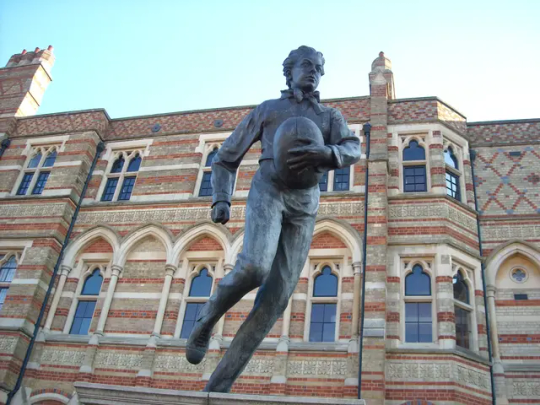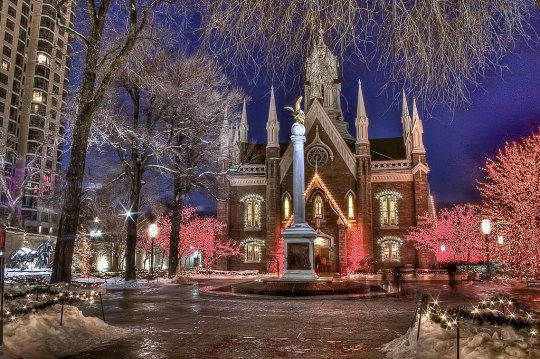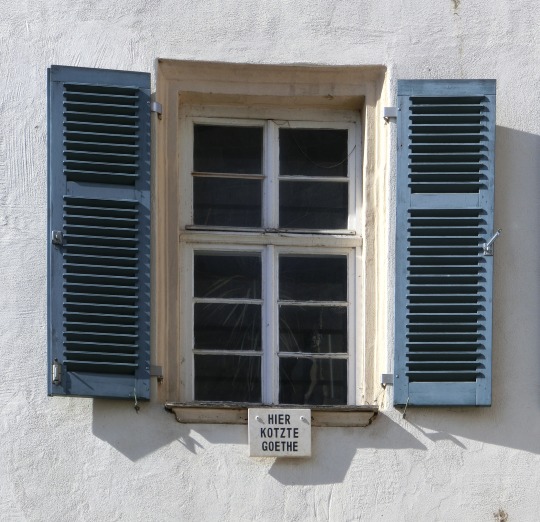Hey there, curious wanderer of the internet! If you’ve stumbled upon this little slice of Tumblr randomness, congrats—you’re officially in for a wild ride! 🎢This blog? Oh, it’s just my happy hobby, my "scroll-and-share" sanctuary where I dig through the internet's treasure troves and deliver you the juiciest, quirkiest, most "wait, what?!" facts and stories I can find. 🕵️♂️✨ Think of it as a buffet of randomness, seasoned with a dash of fun and sprinkled with a whole lotta curiosity.Expect:✔️ Weird history you didn’t know you needed.✔️ Science that makes you go, “Whoa!”✔️ Pop culture nuggets to impress your friends.✔️ Random “shower thought” vibes—because why not?This isn’t serious, it’s not curated by some fancy expert—it’s just me, geeking out and having a blast sharing stuff that makes life more interesting. 🥳 So if you’re into laughing, learning, and leaning into the “huh, neat!” moments of life, you’re in the right place.💬 Hit follow and join the fun! Because the world is weird and wonderful, and I’m here to prove it—one random post at a time. 😎Catch you in the chaos,
Don't wanna be here? Send us removal request.
Text
Something about Villamar (Sardinia)

According to a legend, the statue of the Madonna, revered in Villamar, was supposedly found centuries ago inside a floating chest in the Gulf of Cagliari, likely by fishermen or sailors. The statue was entrusted to the religious authorities and intended for the convent in Pauli Arbarei.
During its journey, the statue made several stops, first at the parish of San Giovanni Battista in Villamar, and then at various points along the route. It is said that the oxen pulling the cart stopped three times: once near the Church of San Pietro, another time at the foot of a hill now known as "Hill of the Madonna d'Itria" (where a commemorative cross can still be seen), and finally just before the border with Pauli Arbarei. At this last stop, despite several attempts, the animals refused to move.
Interpreting the event as a divine sign, the people of Villamar decided to keep the statue and built a small church at the site where the oxen had stopped for good, dedicating it to the Madonna d'Itria.
The statue, dating back to the early 1600s, is made of gilded and decorated wood, and is kept in the parish of San Giovanni Battista, where it occupies a chapel. During the festival in her honor, the statue is displayed on a decorated cart and adorned with jewels offered by the faithful as a token of gratitude for the graces received.
A particularly mysterious detail concerns her earrings, which sometimes seem to move inexplicably. Popular tradition interprets this phenomenon as a sign that the Madonna is granting blessings to her devotees.
#MadonnaDItria#Villamar#LegendOfTheMadonna#SacredStatue#DivineGrace#ReligiousTradition#SantuarioMadonnaDItria#MadonnaDelleGrazie#VillamarHistory#FaithAndDevotion#MiracleStatue#PilgrimageSites#SacredJourney#CagliariGulf#SpiritualHeritage
1 note
·
View note
Text
Something about rugby

Rugby, one of the most loved and widely played sports in the world, has origins steeped in a captivating legend. It is said that it all began in 1823 in the town of Rugby, England, when a student at Rugby School, William Webb Ellis, made a revolutionary move during a football match. Ignoring the rules of the game, he grabbed the ball with his hands and ran towards the opponent's goal. This rebellious act, so simple yet bold, is believed to have laid the foundation for the birth of a new sport.
Although historians often question the authenticity of this story, one thing is certain: rugby has its roots in ancient ball games played across Europe as far back as the Middle Ages. These games, marked by rudimentary rules and intense physicality, were a blend of competition and spectacle. It wasn’t until 1845 that some students at Rugby School formalized the first official rules of rugby, shaping it into the game we know today.
Another fascinating chapter in rugby’s history is the division between 15-player rugby (union) and 13-player rugby (league), which occurred in 1895. This split reflected economic and social differences: while rugby union remained the sport of the upper classes, rugby league gained popularity among the working-class communities in northern England.
#RugbyOrigins#WilliamWebbEllis#RugbyLegend#SportHistory#RugbySchool#FromLegendToGame#RugbyUnion#RugbyLeague#MedievalGames#RugbyLife#TeamSpirit#RugbyCulture#BornToRunWithTheBall#RugbyPassion#HistoryOfSports
1 note
·
View note
Text

Something about Saint Martin
The "Summer of Saint Martin" is a meteorological phenomenon traditionally associated with the saint celebrated on this occasion. Saint Martin, originally from France, was a soldier who, during a violent storm, encountered a beggar. To help him, he shared his cloak, protecting him from the rain.
According to legend, immediately after this act, the skies cleared, and the cold subsided, giving rise to what we now call the Summer of Saint Martin: a brief period of milder weather that occurs in November after the first autumn chills. Later, Martin converted to Christianity, left his military life, and became the bishop of Tours, with his feast day celebrated on November 11th.
This tradition is particularly widespread in Italy, where the Summer of Saint Martin is accompanied by festivals, tastings of new wine, and roasted chestnuts, especially in rural areas. However, similar customs exist in other countries.
In France, the feast of Saint Martin (Saint-Martin) is also celebrated on November 11th, especially in the northern and eastern regions, often linked to harvest and wine traditions. In Germany, Martinstag is marked by lantern processions for children and religious celebrations, though it is not connected to any meteorological phenomenon.
In the United Kingdom and the United States, the term "Indian Summer" is used to describe a period of mild weather in November. However, this expression has no link to Saint Martin and is purely a meteorological term.
#SaintMartin#IndianSummer#LegendsAndTraditions#HistoricalWeather#ChristianSaints#SaintsOfTheChurch#Martinstag#BishopOfTours#ItalianTraditions#FrenchHeritage#GermanTraditions#EuropeanFolklore#SeasonalFestivals#NovemberWeather#AutumnVibes#MildWeather#FallTraditions#WineTasting#ChestnutSeason#FoodAndFestivals
2 notes
·
View notes
Text

Something about the echidna
The echidna is an animal known for its solitary behavior and unusual characteristics. It feeds on ants and termites, which it captures with a long, sticky tongue, similar to that of anteaters. It is covered in spines like hedgehogs and porcupines, lays eggs like reptiles, has a beak similar to birds, and a pouch like kangaroos. Additionally, it has a four-headed penis but lacks both nipples and teeth.
Despite the absence of sweat glands, it can withstand the extreme heat of its habitat, which includes Australia, Tasmania, and New Guinea. To cool down, it has developed a unique system: it releases mucus bubbles from its nose, which burst and moisten it, helping to keep it cool. These adaptations allow the echidna to survive and thrive even in climatic conditions that would seem lethal.
Along with the platypus, the echidna belongs to the oldest family of mammals still in existence.
#Echidna#AnimalFacts#Wildlife#NatureIsWeird#Evolution#BizarreAnimals#MammalFacts#WeirdBiology#DidYouKnow#AnimalBiology#LearnAboutAnimals#ScienceNerd#SpikyMammals#EggLayingMammals#WeirdAndWonderful#StrangeButTrue#AustralianWildlife#TasmanianAnimals#NewGuineaNature
3 notes
·
View notes
Text
Something about Luding Bridge

The Luding Bridge is an ancient suspension bridge located in Luding County, in the Garze Tibetan Autonomous Prefecture, Sichuan Province, China. It was built in 1705 during the Qing Dynasty using strong iron chains and wood. Its strategic position comes from the fact that it was constructed on an island in the middle of the Dadu River, making it one of the key points for controlling the region during the Chinese Civil War.
One of the most famous events related to the bridge is the Battle of Luding Bridge, which took place in 1935 during the Long March of the Chinese Red Army. During this battle, the Red Army soldiers climbed the chains of the bridge to cross it while nationalist forces attempted to stop them. This act became legendary as one of the boldest feats in Chinese military history.
Today, the Luding Bridge is an important historical site, attracting many visitors who are interested in exploring its history and enjoying the surrounding landscape. The structure, with its iron chains and wooden walkway, represents a significant example of traditional Chinese architecture.
#LudingBridge#HistoricLandmarks#LongMarch#ChineseHistory#RedArmy#Sichuan#ChineseArchitecture#CulturalHeritage#BridgeOfLegends#HistoricalSites#ChinaTravel#AdventureAwaits#LudingBattle#AncientBridges#SichuanTourism#TraditionAndHistory#MilitaryHistory#EpicFeats#ExploreChina#HistoricSitesInChina
1 note
·
View note
Text
Something about "fast food"

During the period of the Greek invasion of Sicily, between the 8th and 6th centuries BCE, the settlers introduced new culinary traditions. In the Greek cities of the island, small eateries emerged that can be considered early versions of modern fast food. These establishments, called thermopolia, were shops located along main streets where ready-to-eat meals could be purchased to consume on-site or take away.
The thermopolia were characterized by stone counters that housed large jars used to store warm foods like soups, stews, and grains. The most popular dishes included barley bread, olives, dried figs, and local cheeses, often served with wine. This type of dining was especially convenient for merchants, craftsmen, and travelers, offering them a practical and affordable way to eat.
The cuisine of the thermopolia reflected a blend of Greek and Sicilian culinary traditions, combining local ingredients such as honey, almonds, and aromatic herbs with the flavors and techniques of Greek cooking. This model of fast dining demonstrates the cultural and everyday influence the Greeks had on the island.
This habit of eating on the go also became common in Roman times: in the tabernae, spectators of games in amphitheaters could buy food during the long days of entertainment.
#AncientFastFood#GreekInvasionSicily#Thermopolia#AncientCuisine#GreekSicilianFusion#StreetFoodHistory#RomanFoodCulture#FoodThroughHistory#SicilianTraditions#AncientEateries#CulinaryInfluence#GreekHeritage#FastFoodOrigins#FoodOfThePast#SicilianHistory
3 notes
·
View notes
Text
Something about the heron

Herons, with their grace and beauty, have always captured human attention. Some species, such as the grey heron, were also valued as food: during the Middle Ages, their meat was considered a delicacy reserved for nobles and royalty. Additionally, in Asia and South America, it was common to collect heron eggs and chicks for consumption.
Since ancient times, heron feathers have been used as decorations. Peoples like the Maori and South American indigenous groups used them to adorn hairstyles, ceremonial masks, and traditional garments. In Europe, figures like Marie Antoinette helped popularize feathered hats.
In the 20th century, the fashion for feathered accessories, such as boas and hats, created high demand for feathers. Particularly sought-after were “aigrettes,” small tufts of heron feathers used to embellish hats and hairstyles, especially between the late 19th century and the 1940s. On theater stages and in cabarets, feathers completed the costumes of actresses and singers.
However, the intensive harvesting of feathers caused serious problems for species like the little egret and the great white heron, which were already at risk of extinction as early as the 16th century. Records from 1902 indicate that nearly 193,000 white heron feathers were sold in London alone. To protect these species, the United States in 1910 and Great Britain in 1920 declared the feather trade illegal.
#HeronsOfElegance#FeatheredBeauty#HistoryOfFashion#VintageAccessories#HeronConservation#EleganceInNature#FeatherTradeHistory#ArtDecoStyle#NatureAndFashion#ProtectWildlife#VintageGlamour#WildlifeInDanger#FeathersAndFashion#SustainableStyle#HeronLegacy
2 notes
·
View notes
Text
Something about Milan Central Station

Milan Central Station is one of the largest railway stations in Europe, covering an area of approximately 66,500 square meters and welcoming over 300,000 passengers daily.
The original design, created in 1906 by architect Ulisse Stacchini, envisioned a simpler structure, but the outbreak of World War I delayed its construction. Work resumed only in 1924, and the station was inaugurated in 1931, taking inspiration from Washington's Union Station. Architecturally, it is a blend of styles, particularly Liberty and Art Déco. The building was constructed economically: the lower sections feature marble cladding, while the upper parts use decorative concrete that mimics more precious materials; even the decorations are made of plaster or concrete.
Over the years, the station has undergone several upgrades to meet modern needs. In 1952, the first escalators were installed, and in 1970, the connection to the metro system was completed. Between 2005 and 2010, the station underwent extensive restoration, including cleaning of decorative friezes and reorganizing the interior spaces. In recent years, the station has been renovated with a focus on sustainability, introducing green spaces and improving lighting and ventilation systems.
#MilanCentralStation#MilanoCentrale#HistoricStation#TrainStation#Architecture#ArtDeco#LibertyStyle#ArchitecturalHeritage#ItalianArchitecture#UlisseStacchini#HistoryOfMilan#WWIEra#UrbanRestoration#Modernization#SustainableDesign#DecorativeConcrete#HiddenDetails#GreenSpaces#FriezesAndDecorations#MetroConnection#TravelItaly#TrainTravel#MilanoVibes#BeautifulStations#CityLandmarks
1 note
·
View note
Text
Something about Las Vegas

Las Vegas is considered one of the brightest cities in the world, thanks to its over 15,000 km of neon lights, and its nighttime lights are so intense that they can be seen from space. Astronauts aboard the International Space Station (ISS), located about 400 km above the Earth, have confirmed that they can clearly distinguish Las Vegas at night due to the density and brightness of its artificial lights. Other major illuminated cities are also visible from spacecraft, but Las Vegas stands out particularly because it is situated in a dark desert area, which enhances its brilliance. However, due to excessive lighting, people in the city cannot see the stars.
#LasVegas#BrightestCity#NeonLights#CityLights#SpaceView#VisibleFromSpace#AstronautsView#InternationalSpaceStation#ISS#EarthFromSpace#LightPollution#NightSky#NoStarsInVegas#UrbanLights#DarkDesert#NeonGlow#CityAtNight#DesertLights#VegasVibes#NighttimeBrilliance
3 notes
·
View notes
Text
Something about Cinderella

On February 15, 1950, Cinderella, the animated film inspired by Charles Perrault's famous fairy tale, was screened for the first time in Boston. Produced with a budget of $3 million, the film went on to gross an impressive $95 million over the years.
To reduce production costs, 90% of the scenes were filmed in live action using a set with real actors. Cinderella was a major gamble for Disney: a failure at the box office would have forced the company to shut down. At the time, Disney was $4 million in debt and had not seen a significant box-office success in 13 years, since the release of Snow White and the Seven Dwarfs in 1937.
The story is set in France during the month of June and takes place in a castle specifically designed for the film, inspired by the famous Neuschwanstein Castle in Bavaria. Cinderella’s iconic ball gown was modeled after a design by Christian Dior.
#Cinderella#DisneyClassics#FairyTales#DisneyAnimation#ClassicMovies#1950sCinema#CharlesPerrault#DisneyHistory#Cinderella1950#NeuschwansteinCastle#GoldenAgeOfAnimation#LiveActionAnimation#ChristianDiorDesign
1 note
·
View note
Text
Something about Salt Lake City

On July 24, 1847, a group of Mormon pioneers founded Salt Lake City after journeying beyond U.S. borders to find a secluded area where they could practice their religion free from the hostilities they had faced elsewhere. In 1848, the settlers faced severe challenges: an unexpected late frost coupled with an unusual drought. Tragically, in late May 1848, swarms of crickets descended upon their fields, threatening to destroy much of the pioneers' potential food supply. For at least a month, the settlers battled these insects in what some referred to as the "Cricket War" of 1848.
In early June, large flocks of California gulls arrived in the valley, feasting on the crickets. The gulls would consume the insects, drink water, regurgitate the indigestible parts, and then return to eat more. Although the cricket infestation persisted for several more weeks, the gulls had consumed enough to mitigate the damage.
The deliverance from the 1848 cricket infestation left a significant mark on the collective memory of the pioneers. The "miracle of the gulls" led many early Utah inhabitants to revere these birds, prompting the swift implementation of directives and laws to punish anyone who harassed or killed gulls. Today, the gulls' contribution is commemorated by a statue located in Salt Lake City's Temple Square.
#SaltLakeCity#MormonPioneers#1847History#CricketWar#MiracleOfTheGulls#UtahHistory#PioneerLegacy#TempleSquare#CaliforniaGulls#HistoricEvents#NatureAndFaith#ReligiousFreedom#EarlySettlers#AmericanWest#GullStatue
1 note
·
View note
Text
Something about Sidonia von Borcke

Sidonia von Borcke is one of the most renowned figures in the history of Szczecin, remembered for the tragic tale of the noblewoman accused of witchcraft and subsequently executed.
Born in 1548 into a distinguished knightly family from Pomerania, Sidonia was celebrated for her striking beauty. She was romantically involved with Duke Ludwig von Wolgast, but their love was thwarted by the Duke of Pomerania, forcing the couple to part ways. Heartbroken, Sidonia reportedly cursed the House of Griffins, predicting that their dynasty would die out within fifty years.
The following years were turbulent for Sidonia. Stripped of her family estate and without a permanent residence, she was forced to move frequently. Financial hardships plagued her, and although she had multiple suitors, none of her engagements culminated in marriage.
As she aged, Sidonia became increasingly combative and isolated, surrounding herself with animals and practicing herbal medicine. Eventually, she was accused of witchcraft, with claims that she had cursed the Griffins. This political accusation sealed her fate.
Sidonia had no chance to defend herself. Numerous witnesses testified against her, and after enduring torture, she confessed. As a noblewoman, she was sentenced to death by beheading with a sword. Her execution took place on August 19, 1620, outside the walls of Szczecin. Her body was then burned at the stake.
Interestingly, around a dozen years later, the prophecy seemingly came true when the last Griffin ruler, Bogusław XIV, died without heirs. This reignited the legend of Sidonia, which continues to evoke both fear and fascination to this day.
#SidoniaVonBorcke#WitchcraftTrials#HistoricalFigures#SzczecinHistory#Pomerania#HouseOfGriffins#WitchLegends#MedievalHistory#TragicNoblewomen#WitchTrialStories#SidoniaLegend#16thCenturyHistory#HistoricalMysteries#DarkHistory#LegendsAndLore
5 notes
·
View notes
Text
Something about Jimi Hendrix

In 1961, in Seattle, Jimi Hendrix, barely 18 years old, was arrested by the police after being caught twice driving stolen cars. After spending a few days in detention, he ended up in court. During his trial, Hendrix faced a choice: serve time in prison or enlist in the military. Opting for the latter, he was enlisted on May 31, 1961, as a paratrooper in the airborne division. He was sent to Fort Ord, California, to join the 101st Airborne Division for eight weeks of training.
The experience wasn’t entirely negative, as it was during this time that he met Billy Cox. However, Hendrix’s time as a paratrooper at Fort Campbell lasted just a year. He managed to leave the military, a career he had never truly desired, due to a hip injury sustained during training.
#JimiHendrix#MusicHistory#1961#Seattle#MilitaryLife#Paratrooper#FortOrd#101stAirborne#BillyCox#HendrixJourney#RockLegend#MusicIcons#HendrixBackstory#LegendaryMusicians#1960sMusic#HendrixLegacy
1 note
·
View note
Text
Something about Goethe

There is a plaque in Germany with the inscription "Hier kotzte Goethe," which translates to "Here Goethe vomited." This plaque is located in Tübingen, near the Martinianum, a building next to the Cottahaus. The Cottahaus was the residence of Johann Friedrich Cotta, the first publisher of Schiller and Goethe’s works. During his week-long stay in Tübingen in 1797, Goethe sought inspiration in the city’s taverns. The famous literary figure, also known for his love of parties, is commemorated by a plaque reading "Hier wohnte Goethe" (here Goethe lived). However, on the wall of the student residence next door, there is another plaque with a slightly more irreverent inscription: "Hier kotzte Goethe" (here Goethe vomited). This plaque humorously marks the spot where Goethe allegedly vomited during his visit, although there is little historical evidence to confirm the event.
#GoetheHumor#GoetheTübingen#LiteraryLegends#GoethePlaque#HistoricHumor#GoetheFunFact#TübingenTales#GoetheHistory#LiteraryHistory#GoetheAdventures#FamousWriters#GoetheLegacy
1 note
·
View note
Text

Among the most intriguing superstitions linked to classical music is the “Curse of the Ninth,” which suggests that some of the most famous 19th-century composers died after writing their ninth symphony. This legend stems from a series of coincidences involving great musicians throughout history.
The myth originated with Ludwig van Beethoven, who passed away shortly after completing his Ninth Symphony, widely regarded as one of the greatest masterpieces in Western music. This work, considered the pinnacle of his artistic career, helped establish the belief that the ninth symphony represented a fatal limit for composers.
The legend gained further traction with the story of Gustav Mahler, an Austrian composer known for his superstition. Hoping to evade the curse, Mahler chose not to number one of his works after his Eighth Symphony, instead titling it “The Song of the Earth.” However, after completing his actual Ninth Symphony, he began working on the Tenth, which remained unfinished due to his death.
Other composers have also contributed to the legend, such as Franz Schubert, who died at just 31 years old, Louis Spohr, a pioneer in orchestral conducting, and Antonín Dvořák, whose Ninth Symphony became famous as the soundtrack for the first moon landing. These and other examples have perpetuated the mystique surrounding the “Curse of the Ninth.”
#CurseOfTheNinth#NinthSymphony#ClassicalMusicLegends#Beethoven#Mahler#MusicalSuperstitions#MusicHistory#ComposerStories#NinthSymphonyMyth#GustavMahler#FranzSchubert#AntoninDvorak#MusicMistery#MusicLore#ClassicalComposers#FamousComposers#ClassicalMusicFacts#MusicLegends#MusicSuperstition#CursedSymphony
3 notes
·
View notes
Text
Something about the Owl

Owls possess exceptional vision, considered their most developed sense. This trait is highlighted by the size of their eyes, which are very large in proportion to their skull. Positioned frontally, an owl's eyes enable three-dimensional (3D) vision, essential for accurately calculating distances. However, since their eyes cannot move within their sockets, they compensate for this limitation with the ability to rotate their head up to 270 degrees, or 135 degrees on each side. This movement allows them to observe their surroundings, aiding in both hunting and defense.
Owls are renowned for their outstanding night vision. Their eyes, adapted for better distance vision than close-up, feature an iris capable of contracting and dilating noticeably depending on the level of light, both during the day and at night.
The owl's particularly flexible neck further enhances their field of vision. Through oscillating and rotational movements, adult owls can accurately spot prey during hunts, while young owls use these motions to hone their visual skills and learn to master them.
#Owls#OwlFacts#BirdVision#NocturnalAnimals#NatureLovers#WildlifePhotography#AnimalBehavior#BirdWatching#NightVision#AnimalAdaptations#BirdsOfPrey#UniqueAnimals#NatureIsAmazing#WildlifeFacts#OwlEyes#PredatorSkills#360Vision#AnimalAnatomy#NatureExploration#WildlifeWonders
2 notes
·
View notes
Text
Something about the Golden Bridge
The Golden Bridge is a pedestrian bridge located on the Ba Na Hills, near Da Nang, Vietnam. Built along the Annamite Range, a mountain chain that spans Laos, Cambodia, and Vietnam, it was designed by TA Landscape Architecture. Its purpose is to provide tourists with access to the Ba Na Hills amusement park and to offer an additional tourist attraction. The bridge, consisting of eight spans, rises above the dense greenery of the Thien Thai Garden on the Ba Na hills. Due to its unique design and the beauty of the surrounding landscape, the bridge draws many visitors. Suspended above sea level, it is approximately 150 meters long and is adorned with beautiful purple Lobelia flowers. The giant stone hands supporting the bridge have an ancient and worn appearance, designed to make them look old. These hands stand about 24 meters high and are 13 meters wide, with each finger having a diameter of 2 meters. The bridge's metal deck is golden in color, while the support columns are painted to blend in with the forest, creating the illusion that the bridge is floating in mid-air. According to local reports, the Golden Bridge cost 2 billion dollars and aims to boost tourism in Vietnam. The bridge was inaugurated in June 2018.

#GoldenBridge#BaNaHills#VietnamTravel#DaNang#IconicArchitecture#TA_Landscape_Architecture#AnnamiteRange#ThienThaiGarden#TravelGoals#ArchitecturalMarvel#NatureAndDesign#VietnamTourism#FloatingBridge#StoneHands#BucketListTravel#AmazingPlaces#PurpleFlowers#InstaBridge#WorldWonders#AsiaTravel
1 note
·
View note